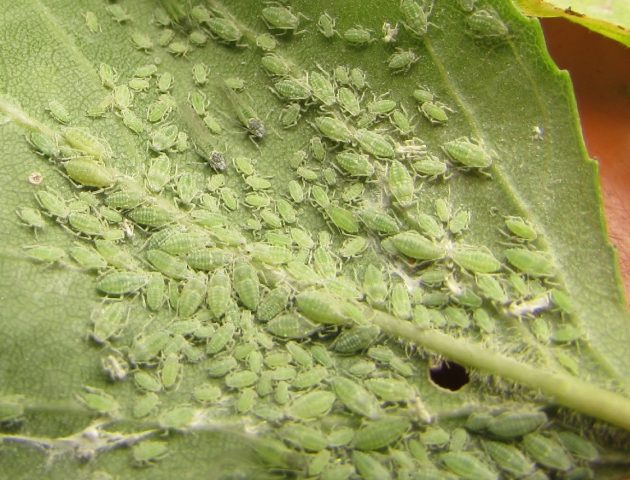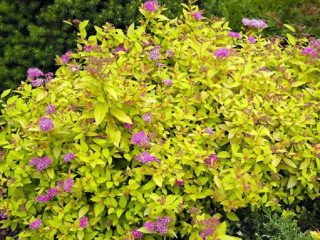Content
Many people become confused when spirea dries out, since it is one of the most unpretentious garden crops that does not require special attention. The shrub overwinters well without shelter in central Russia and rarely gets sick. And yet, if the rules of agricultural technology are violated, the plant’s immunity may weaken, as a result of which the plantings become vulnerable to diseases and pests. In most cases, they are the reason why spirea leaves begin to dry out and turn yellow.
Why do spirea leaves dry out?
There are a number of reasons why spirea shoots and leaves begin to dry out:
- Irregular and infrequent watering. Spiraea has a fairly shallow root system, which is why the shrub does not tolerate prolonged drought. On the other hand, you should also not flood the plantings - in this case, there is a high risk of root rotting.
- Ignoring the timing of sanitary pruning. This, in general, does not significantly harm the development of spirea, but the decorative value of the bush decreases, since the old shoots begin to dry out upon reaching the 4th year of life. This gives the bush an unkempt appearance.
- Planting in unsuitable soil.Spiraea does not make any special demands on soil quality, but for optimal development of the shrub, a number of conditions must still be observed. In particular, it is not recommended to plant the bush on heavy clay soils. Soil with a low acidity level is best suited for this.
- The presence of moles on the site, which could damage the root system of the plant if the digging is too close to the plantings.
- Excess fertilizers, which are placed in the planting hole before planting spirea, and incorrect placement of the seedling on the soil mixture. The roots of the plant should not touch fertilizers.
- The plant is too deeply buried when planting.
- Insufficient depth of the planting hole.
- Poor soil permeability, as a result of which water stagnates and causes rotting of the root system.
- Thickening of plantings.
- The proximity of the anthill to the bush.
- Disease or damage to spirea by pests.
As can be seen from this list, most often spirea dries out due to non-compliance with the basic rules of planting and caring for shrubs, and only 3 points out of 11 are represented by pests and diseases.
Diseases and pests of spirea
Among the pests, the following insects should be especially highlighted:
- Rosaceae miner;
- rose leaf roller
- aphid;
- spider mite
The multi-colored leaf miner infects spirea in June-July, and the roseate leaf roller in March. They quickly exhaust the bushes, causing the leaves to first curl and then dry out.
The following chemicals are commonly used to control these pests:
- "Aktellik";
- "Etaphos";
- "Pyrimor";
- "Hostakvik";
- "Kronefos";
- "Fozalon".
The aphid invasion occurs in the second half of summer. Granulated “Pyrimor” has proven itself well in the fight against this pest.You can also treat spirea with the biological product “Bitoxibacillin” or garlic infusion. To prepare such a tincture, you need to pour about 200 g of chopped garlic with cold water and leave the resulting solution for 2 hours.
Spider mites appear on spirea leaves in May, but they cause the main damage in July-August. The first sign of plant damage by this pest is the formation of thin cobwebs and whitish spots on the shoots. As a result of the pest's activity, the leaves of the bush quickly turn yellow, dry out and fall off.
Spirea is sprayed against spider mites with the following insecticides:
- "Phosfamide";
- "Karbofos";
- "Keltan";
- "Fozalon";
- "Acrex".
You can also use folk remedies. For example, wood ash and laundry soap effectively repel ticks. To do this, fill ¼ of a bucket of ash with cold water and add about 3 tbsp. l. finely grated soap. The solution is infused for 2-3 days.
Spiraea gets sick very rarely. The main threat is verticillium, which is caused by the verticillium fungus. The first signs of the disease are wilting and yellowing of the leaves, which quickly begin to dry out. First of all, the disease affects the lower leaves of spirea. Increased soil moisture provokes the development of fungus.
If a plant is infected with verticillium, it is necessary to spray the bush with “Fundazol” or a solution of potassium permanganate. You can also use a solution of copper sulfate.
Separately, it is worth noting such a reason for the drying out of spirea leaves as damage to the roots of the plant by moles. There are many ways to get rid of these pests, but it is best to use humane repellent methods:
- Installation of acoustic devices “Antikrot”, “Krotogon” and similar ones. These devices emit ultrasound, which disorients moles, making the garden area unattractive to them.
- Burying empty plastic or glass bottles, neck up, into holes dug by moles. The wind entering the bottle begins to make a humming sound, which scares away the moles.
- Placement of containers with castor oil on the site. The strong odor of the substance is unpleasant to rodents.
These methods do not lead to the death of animals and are quite simple.
Preventive measures
It is always better to prevent a disease than to treat it. To prevent spirea from starting to dry out, it is enough to follow the most basic rules of agricultural technology:
- Plant shrubs on loose soils with low acidity.
- Do not thicken the plantings.
- Do not make the planting hole too deep. The recommended depth is 40-50 cm. In this case, it is advisable to ventilate the planting holes and plant the bushes only after 2-3 days.
- Water the spirea in a timely manner.
- Weed the tree trunk, as weeds are an ideal breeding ground for pests.
- Trim bushes regularly.
- Do not bury the seedling too deeply. The root collar of the plant should be at ground level.
In addition, it would be useful to periodically spray the bushes with fungicides and insecticides.Not only already planted plants, but also planting material should be subjected to preventive treatment.
If the clay content in the soil is too high, it is recommended to lay drainage at the bottom of the planting hole.
What to do if spirea leaves turn yellow
Yellowing of leaves ahead of schedule is most often caused by a fungus. In this case, the spirea must be treated with any fungicide.
Conclusion
Spiraea does not dry out very often - for this to happen, a serious violation of the rules of agricultural technology is necessary. In rare cases, the plant dries out due to pests and diseases. Thus, it is very simple to avoid the drying out of the shrub - you just need to study the features of planting this garden crop and properly care for it.

















